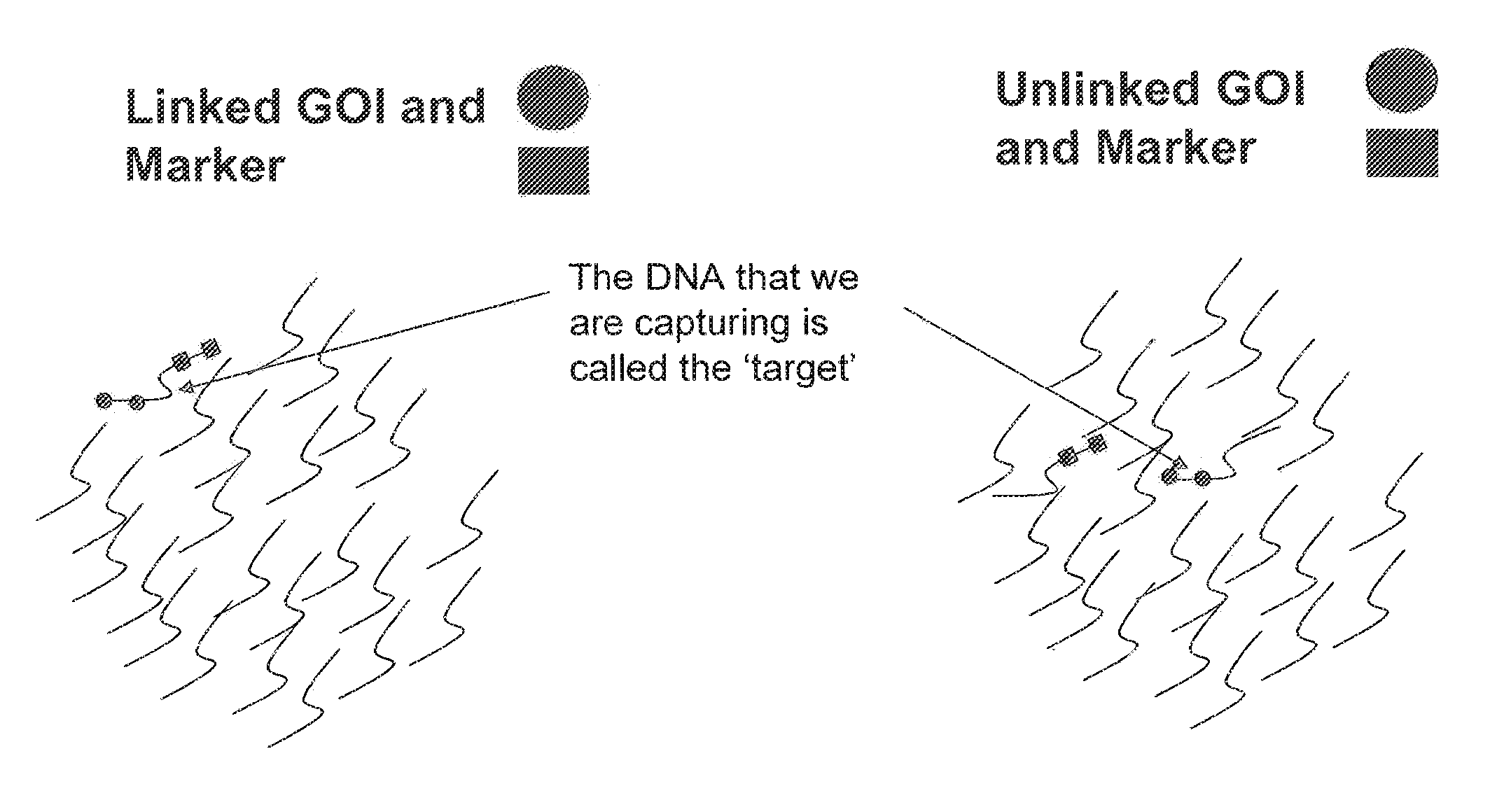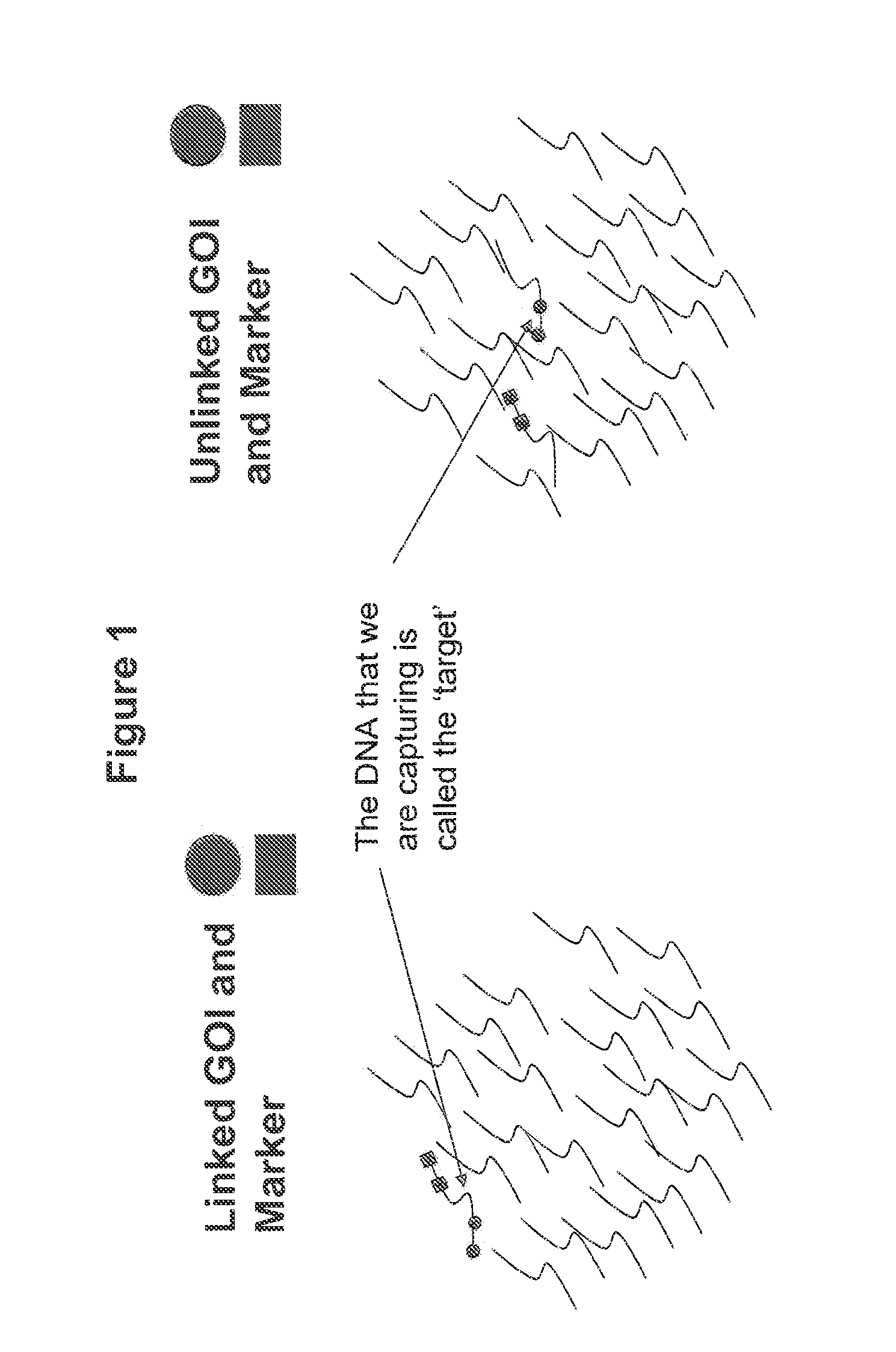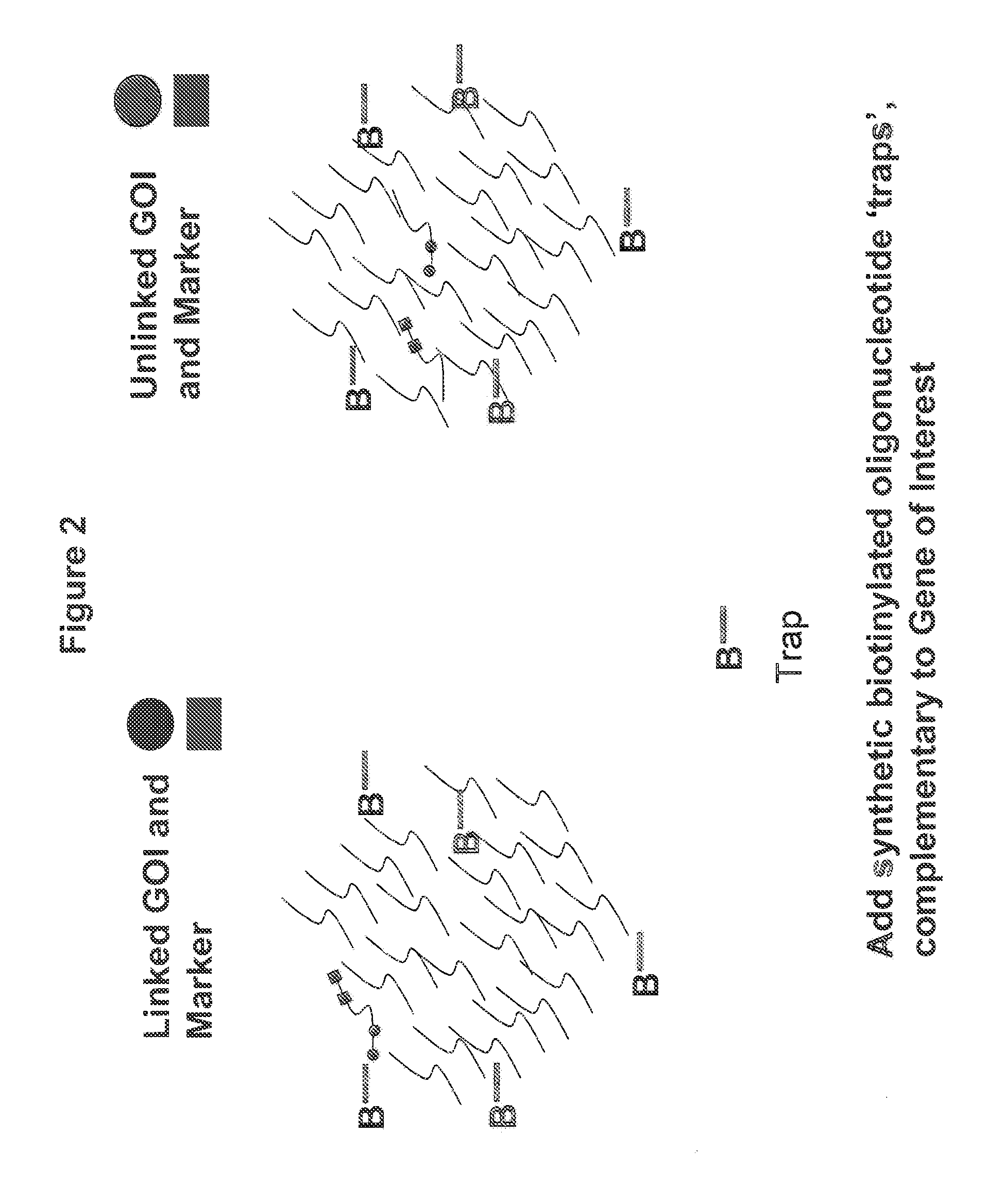Methods for Identifying Genetic Linkage
a genetic linkage and method technology, applied in the field of plant genetic engineering, can solve the problems of inability to easily automate, inconvenient to carry out, time-consuming, and ineffective cost, and achieve the effect of suppressing the expression of an endogenous gen
- Summary
- Abstract
- Description
- Claims
- Application Information
AI Technical Summary
Benefits of technology
Problems solved by technology
Method used
Image
Examples
example 1
Sample Preparation and Separation of Distinct Polynucleotide Sequences
[0124]This example describes the preparation of a sample and the separation of the distinct polynucleotide sequences of interest from a plant sample.
[0125]Genomic DNA was extracted using a filter Dellaporta DNA extraction process (Dellaporta, S. L., et al., 1983. A plant DNA minipreparation: version II. Pl. Molec. Biol. Reporter 1: 19-21). In other instances, standard phenol-chloroform extraction has also been used successfully. Briefly, lyophilized leaf tissue was placed in a 96-well sample box (Nunc, Inc.), 2 steel ball bearings were added to each well, the box was sealed with a cap map (Nunc, Inc., Rochester, N.Y., US) and the box was shaken for approximately 3 minutes on a Harbil paint shaker to pulverize the tissue. Extraction buffer (1% final concentration in 400 microliters extraction buffer (American Bioanalytical, Inc., Natick, Mass., US; Catalogue No. CU14139-20000) was added to each well, and the mixtur...
example 2
Measurement of Distinct Polynucleotides
[0133]TaqMan™ assays were run by transferring 2 microliters of the eluted DNA to each of three different wells of either a 96-well or 384-well Realtime assay plate (Applied Biosystems (ABI) 96 or 384 well reaction plates (cat #4309849). 8 microliters of PCR mastermix (ABI 2X Universal Master Mix (cat #4304437), containing primers and probe at the appropriate concentration for each validated reaction) was added to each well. An optically-clear cover (ABgene cat #Ab0558) was placed over the plate, and the reaction was cycled (Applied Biosystems 7900HT) according to the following parameters: 50° C. for 2 minutes, 95° C. for 10 minutes, and then 35 cycles of 95° C. for 15 seconds and 60° C. for 1 minute. Three separate PCR reactions were done for each sample of DNA: the reference gene of interest (GOI) reaction, and reactions for the selectable marker and the construct backbone. Data were read as Realtime cycle threshold (CT) by the thermocycler.
example 3
Analysis of Measurement Data
[0134]Upon completion of the PCR reactions, the data were downloaded into the Microsoft Excel™ software program (Microsoft, Inc, Redmond, Wash., US), and arranged to provide comparisons of the CT values. A graphical representation of the data obtained in this experiment are shown in FIG. 12. Linked and unlinked events were distinguished by comparing the Marker CT with the GOI CT. Event selection was made by choosing those events that had markedly higher CT's than those of the marker; these were unlinked events. Linked events had CT's closer to those of the GOI. A certain population failed PCR reactions; these may or may not be kept, depending on the number of plants needed.
PUM
| Property | Measurement | Unit |
|---|---|---|
| temperature | aaaaa | aaaaa |
| temperature | aaaaa | aaaaa |
| temperature | aaaaa | aaaaa |
Abstract
Description
Claims
Application Information
 Login to View More
Login to View More - R&D
- Intellectual Property
- Life Sciences
- Materials
- Tech Scout
- Unparalleled Data Quality
- Higher Quality Content
- 60% Fewer Hallucinations
Browse by: Latest US Patents, China's latest patents, Technical Efficacy Thesaurus, Application Domain, Technology Topic, Popular Technical Reports.
© 2025 PatSnap. All rights reserved.Legal|Privacy policy|Modern Slavery Act Transparency Statement|Sitemap|About US| Contact US: help@patsnap.com



